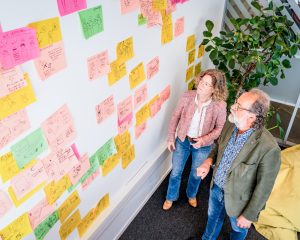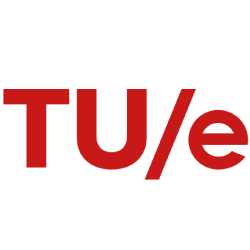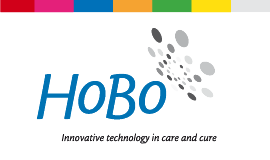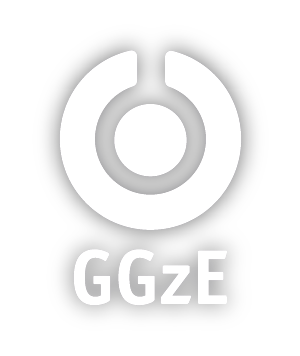Empowering Epilepsy Care: Decoding Transcranial Electric Stimulation
Hi all, my name is Steven Beumer (30 years old) and for the last four years I’ve been doing my PhD at the TU/e, specifically the Electromagnetics group of Electrical Engineering. I was born and raised in Geldrop, a small village next to Eindhoven, so studying at this university was almost a no-brainer.
My research is focused on using transcranial electric stimulation for epilepsy patients that cannot be treated using medicine or surgery and is part of the PerStim project. This project was conceived from the wish to be able to reduce the treatment gap in epilepsy and thus lower the burden of this disease on the patients and society.
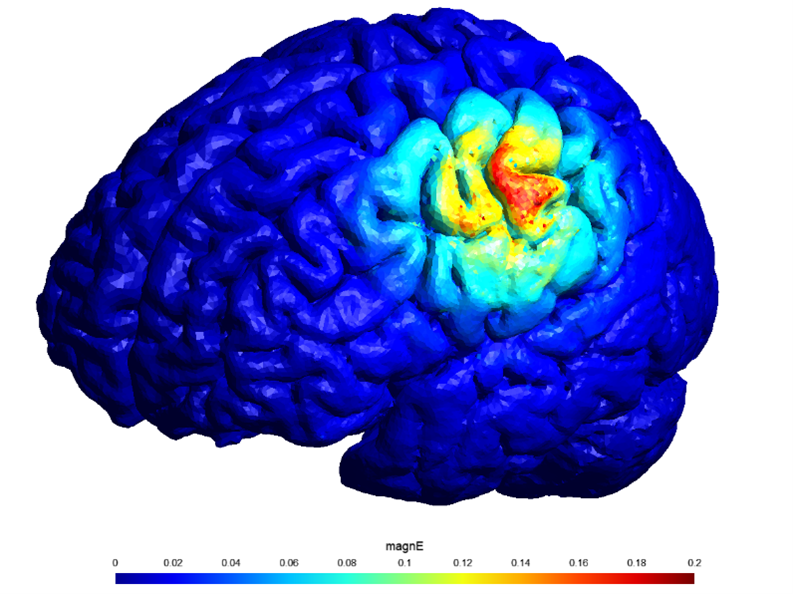
Electrical stimulation is simple, but very complex
Together with the Ghent University Hospital, Kempenhaeghe and Philips we started to research the use of electrical stimulation for epilepsy treatments. Through extensive literature studies, we found that the working mechanism of this technology is still poorly understood. Thus, we set out to answer a fundamental question using clinical studies: “Are we stimulating the brain with currents that go straight through the skull, or is it taking a more complicated route like the facial nerves?”
This method holds great promise for the future because of its affordability, simplicity, and potential for home use, which could ultimately reduce the need for frequent hospital visits.
To support these studies, I was tasked with making patient models, optimizing the electrode positions as well as analyzing the data. Together with students from Fontys and the TU/e, we built a full workflow to do this in a very quick and efficient manner. Eindhoven Engine enabled us to cooperate with the students from the Fontys. Their working mentality and different way of approaching problems were fundamental to significant parts of this work. Our clinical studies are still running, but preliminary results have shown that the answer to the abovementioned question might be that the stimulation works via both the direct and the indirect paths.
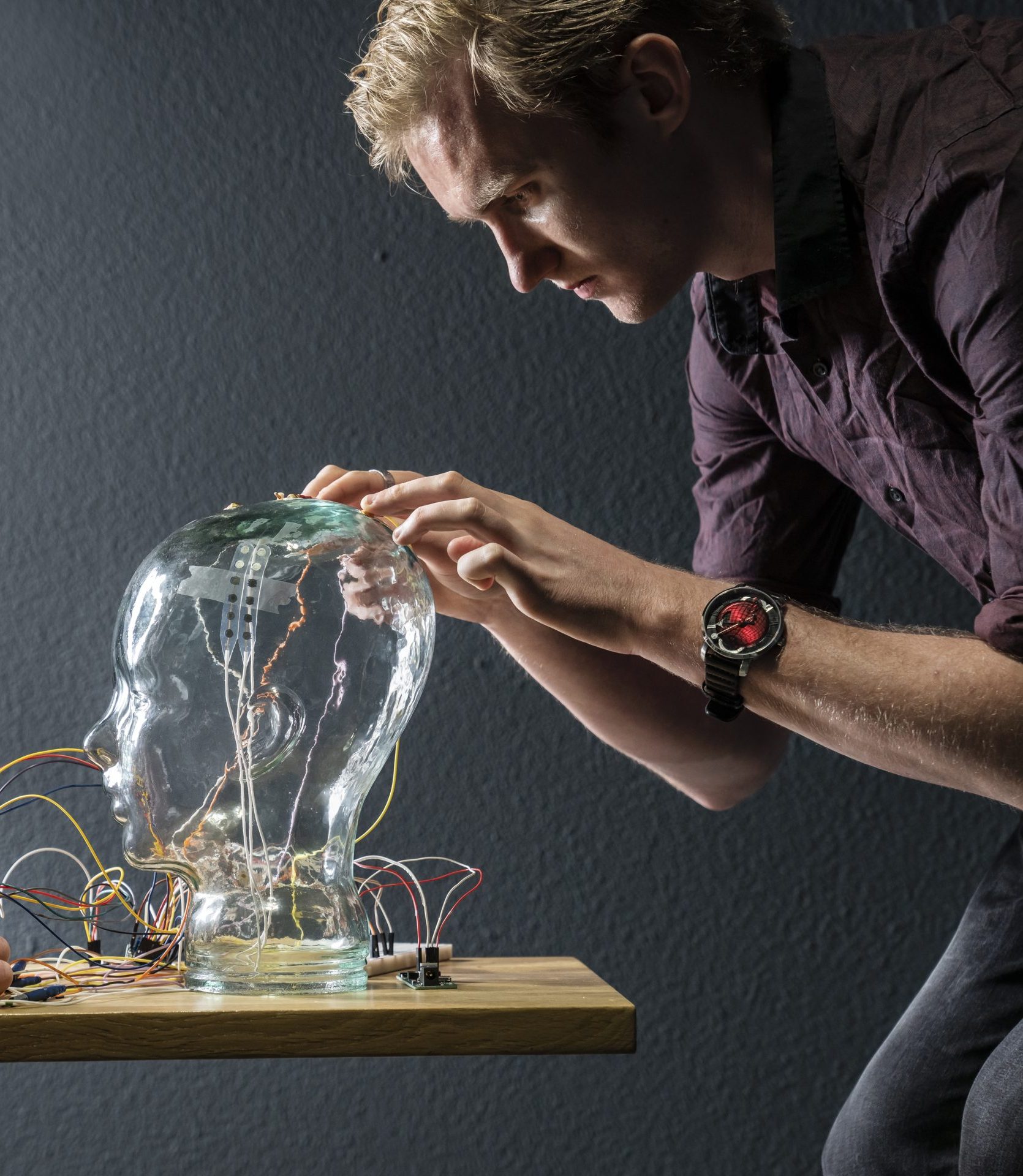
Looking into the future
Even though the use of transcranial electric stimulation is more complex than initially assumed, we have just started to unravel the actual working mechanism and I wholeheartedly believe that as we gain a deeper understanding, we can improve the methods and their efficacy. This method holds great promise for the future because of its affordability, simplicity, and potential for home use, which could ultimately reduce the need for frequent hospital visits.
My time at the university is running out, but I am still as fascinated by the world of brain stimulation as I was when starting this project and I’ll keep working in this field to improve the understanding of these techniques and unlock their potential for patients.
Using technology to tackle low literacy
Hi, I’m Jessica Goss and, as a visual designer, I have always dedicated my efforts, creativity and abilities to developing something meaningful for people, using my knowledge to make people’s lives better. With that in mind, after I finished my master’s degree, I developed a mobile game with the COVID-19 pandemic as the background.
The experience of creating a mobile game that had such success in my home country of Brazil made me think that maybe this could be the right path for me: finding a way to put together my skills and my desire to change people’s lives through design. That was one of the reasons that led me to apply for an EngD position at TU/e to work in the Emergence Lab at Eindhoven Engine on Low Literacy and the Future of Work projects.
Focus within low literacy
Nowadays, almost 2.5 million people are low literate just in the Netherlands and this number is increasing over time. It is known that there are different types of literacy, but we are focusing on reading and writing abilities since these are the main forms of communication and access to knowledge in contemporary society. On top of that, there is a shortage of teachers for all these people, so we should use technology such as Artificial Intelligence, digital games and social media to tackle this problem. However, low literacy, as you might imagine, is a complex problem. Choosing a traditional way of designing is not the right decision.
I have always dedicated my efforts, creativity and abilities to developing something meaningful for people, using my knowledge to make people’s lives better.
Using design thinking
Up to this moment, I have been studying in order to better understand this issue, following design thinking steps as an approach. At the same time, I am learning how to develop a way of thinking that is systemic and takes into account the complexity of this wicked problem. I am being supported by an excellent team of teachers and I believe that the EngD program is helping me to have access to the latest research in AI interaction and user experience, guiding me to become a more human and complete designer. Regarding the language (you might be asking yourself), since I don’t speak Dutch (yet), I am following interviews by Dutch students with the target group to get information on how we can develop a solution that really will help them.
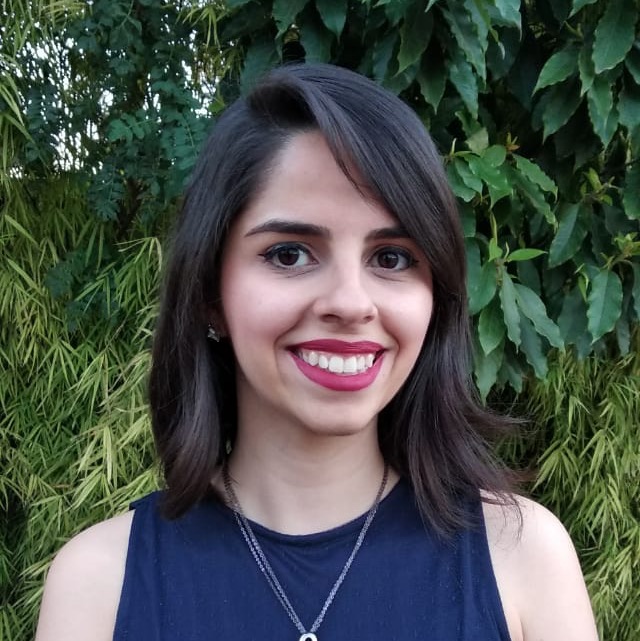
Finally, my next steps will be developing a prototype to be tested with the target group until the end of the year and then making the necessary changes to adapt to their needs. Also, I wish to extend this project to my home country and – why not? – more countries.
Neurological MRI-based biomarkers for treatment navigation in depression
My name is Jesper Pilmeyer (28 years old) and I am a PhD candidate in the Signal Processing Systems group at the Department of Electrical Engineering (Biomedical Diagnostics research group). I finished my bachelor’s and master’s in Medical Engineering at TU/e at the Department of Biomedical Engineering. I graduated with a specialization in medical image analysis.
In 2019, I started my PhD, after which we initiated a clinical study called Neurotrend in collaboration with Philips and the epilepsy centre Kempenhaeghe. Neurotrend is one of the first Eindhoven Engine OpenCall projects.
Predicting the clinical outcome
This study is aimed at predicting the clinical outcome (i.e., the course/development of a disease) of people with depression based on MRI scans. More specifically, we obtain structural, functional (activity) and vascular MRI scans of the brain of subjects with and without depression at the beginning of the study and after a year. During the one-year period, we monitor their depression symptoms and cognitive ability. In this way, we can predict how the depression will develop over time based on the first scans but also evaluate brain changes over a year and correlate this to symptom changes. The clinical study was ethically approved in 2021 and its data acquisition is almost finished at the time of writing.

Preliminary results
From the preliminary results, we can conclude that brain activity patterns and interaction between brain networks is time-varying and that including this neurodynamic nature in a model improves the prediction of depression symptom severity changes over time compared to more standard/static approaches (brain activity/synchronicity over the whole functional MRI scan). Moreover, we demonstrate that a relatively novel MRI acquisition method, called multi-echo multiband imaging, increases the functional MRI signal quality and improves, amongst other things, the temporal resolution. This is beneficial as it allows us to more reliably model network interactions. Another interesting finding was the fact that brain volume and tissue properties of several limbic structures, which are known to be involved in emotion processing, also have predictive value for clinical outcome in depression. A smaller amygdala (associated with fear processing) volume correlated significantly with a higher number of lifetime depressive episodes.
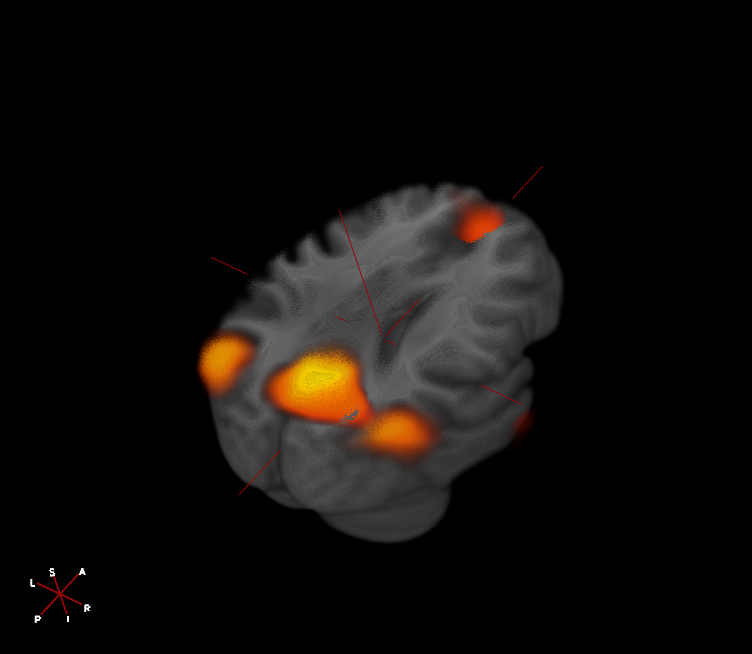
Improving the models and interpreting clinical meaning
In the last period of the PhD, I will focus on improving the models and interpreting the clinical meaning of these results, which will further help in understanding the aberrant brain mechanisms in subjects with depression. We hope to show other researchers the direction in which we think future MRI studies related to psychiatric disorders should head. Taking into account the complex, dynamically interactive brain while implementing the aforementioned MRI acquisitions could lead to more replicative results, especially if carried out in studies with a larger sample size. Even though we will not yet be able to apply these models in the clinic to support (still subjective) clinical decision-making, we are contributing significantly to existing depression-related MRI research. We have demonstrated the potential of state-of-the-art analyses and acquisitions in combination with a multi-modal MRI-based longitudinal study for depression diagnosis/prognosis purposes.

A non-invasive approach to treatment
Using EEG- and MR-imaging based transcranial electrical stimulation, the Eindhoven Engine project PerStim (Personalized neurostimulation) investigates how treatments for patients with refractory focal epilepsy and prevalent co-morbid disorders can be personalized effectively. Via transcutaneous direct/alternating current stimulation (tDCS/tACS), the overall aim is to develop personalized, non-invasive neurostimulation protocols to provide (non-)refractory epilepsy patients with a better quality of life. This non-invasive approach to treatment is a method whereby an operation is not needed and treatment outside the body, as it were, is made possible.
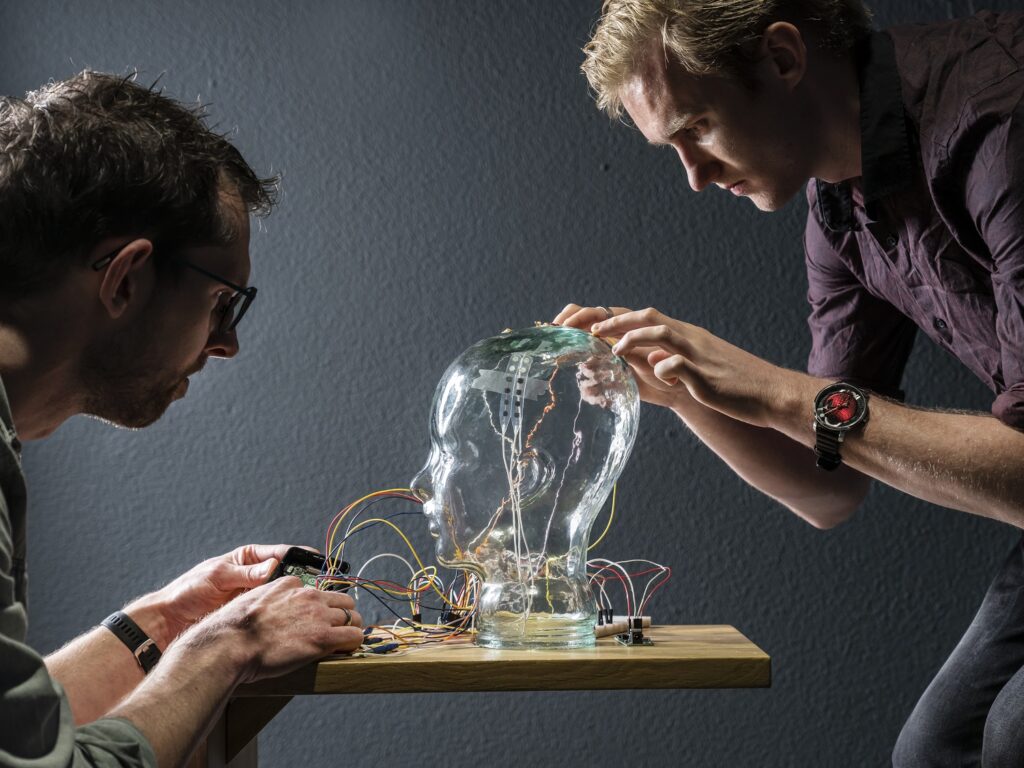
Tight technical-clinical cooperation
To realize these ambitions, TU/e has teamed up with Philips Electronics Nederland B.V. and Kempenhaeghe, the Academic Center for Epileptology. UZ Ghent is also involved through the part-time neuromodulation chair of Professor Paul Boon. PPP Allowance co-funding has been made available to Epilepsiefonds by Health~Holland’s Top Sector Life Sciences & Health in order to stimulate public-private partnerships. Project partner meetings take place approximately once per month, with Fontys and TU/e student projects expected to be held in Eindhoven Engine’s building Disruptor. Such close collaboration and the integration of their results in clinical trials will allow for direct testing of PerStim’s neurostimulation hypothesis.
First clinical study
With the support of Eindhoven Engine, PerStim successfully completed the first clinical study and developed a suitable skull model to commence the second clinical study. The project also integrated two Fontys students into the team, whose contributions will be included in a PhD thesis. Additionally, a spin-off project was launched under PerStim to extend the non-invasive neurostimulation approach to transcranial focused ultrasound stimulation. This initiative was further bolstered by recruiting an additional postdoc, in collaboration with the Donders Institute in Nijmegen.
Videos
In the Netherlands one third of the epilepsy patients (100.000+) keep having seizures; even after trying several medicines. The next treatment will be surgery. But there is a promising alternative treatment: neurostimulation.
Rob Mestrom – Project Leader
In this project PerStim Rob Mestrom and his team do research in personalizing neurostimulation for epileptic patients. He does this with a tight technical clinical cooperation with partners TU/e, Philips Electronics, Kempenhaeghe, UZ Ghent, and Epilepsiefonds.
Steven Beumer – PhD candidate
Steven Beumer uses brain images and brain recordings to try to optimize stimulation protocol for patients. Together with Fontys graduation students, they are working on artificially skull that mimics the real skull and its electrical properties.
Infographic

The aim of this project is to arrive at a reliable objective diagnostic technique based on functional MRI scans of the patient, and ultimately to apply these in decision support systems for diagnosis, patient stratification and therapy selection. This can significantly reduce the burden of disease and costs, and can also create an important new market for MRI scanners.
With support from Eindhoven Engine, the project initiated student internships and graduation projects that contributed to valuable research outputs, which were then shared with the Eindhoven Engine community. During the project period, Neurotrend gained valuable insights into imaging and AI through project update meetings and discussions
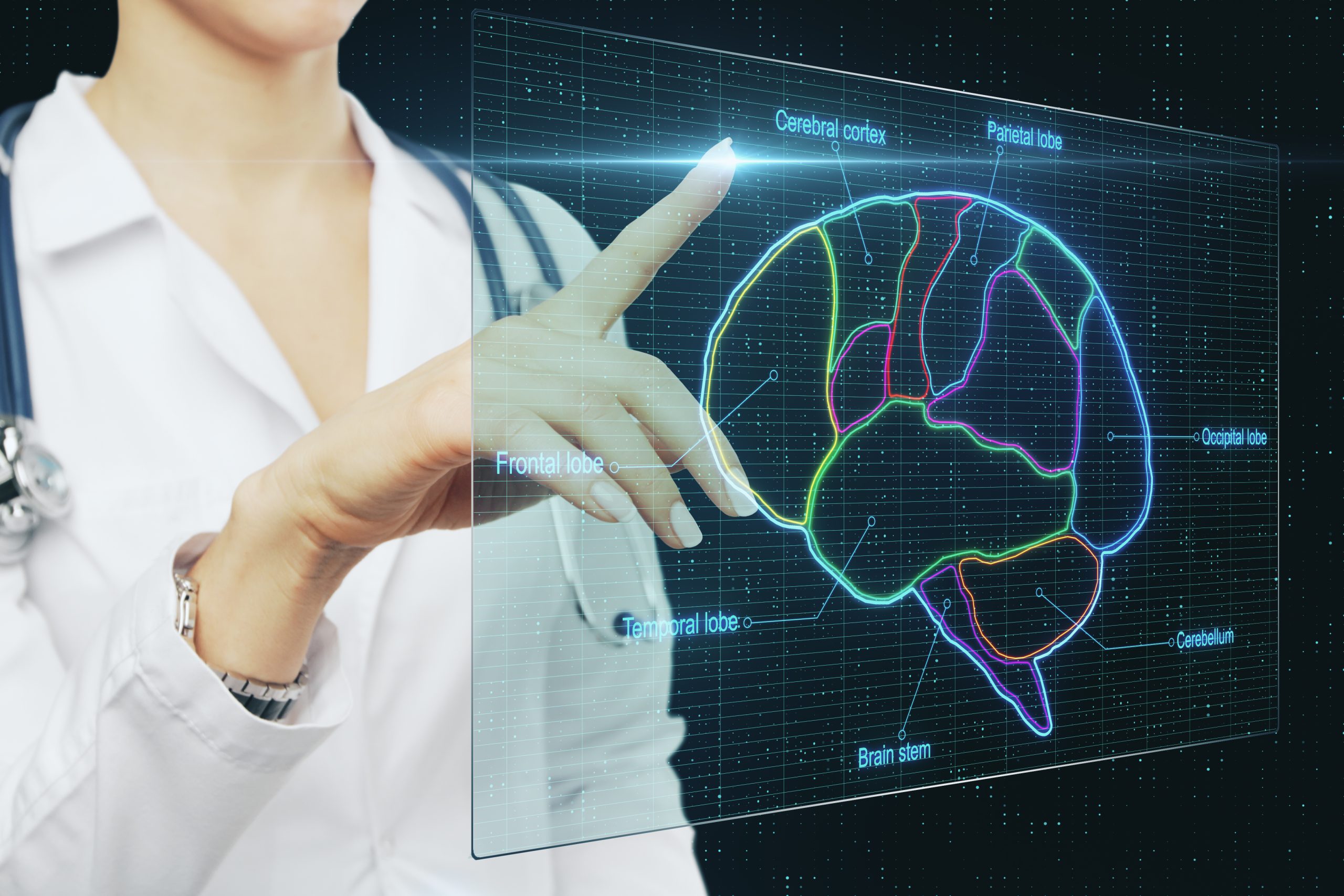
Key benefits included:
- Creating opportunities to share and discuss Neurotrend’s study results.
- Providing a facility for work and meetings in a multidisciplinary environment.
- Hosting thematic sessions that offered useful information on specific topics, applicable to ongoing research.
This collaborative effort not only advanced research but also fostered a vibrant, knowledge-sharing community.
